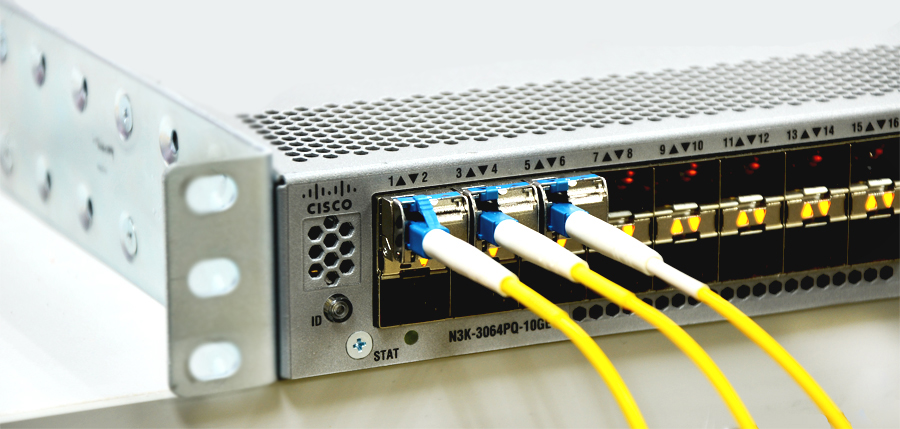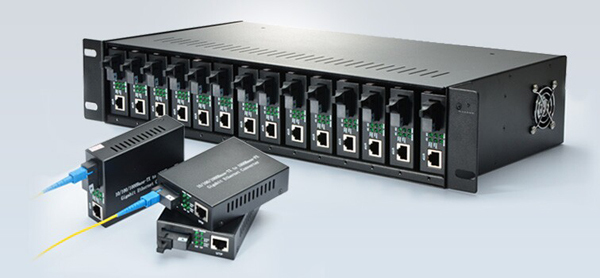For a rather long period that the majority of optical networks demand a pair of fibers to achieve full duplex operation, as one for transmitting and other for receiving. However, the extensive growth in metro Ethernet networks has increased the range of metro WDM product offerings. One prominent feature is the availability of single strand fiber products. Single strand fiber allows the user to simultaneously send and receive data on one strand of fiber. It provides full duplex operation without the cost of a secondary fiber cable. Single strand fiber allows a full duplex transmission over a single (bi-direction) fiber, which provides an alternative for network managers with limited fiber capacity and limited budgets. Moreover, it becomes increasingly popular for new installations. This article is supposed to give a brief introduction to single strand fiber.
Single strand fiber transmission uses a single strand of glass (optical fiber) to send data in both directions, also known as bidirectional (BiDi) transmission. In recent years, mainstream single strand fiber transmission technology is based on two wavelengths traveling in opposite directions (also called TW BiDi transmission). This technology is achieved via wavelength division multiplexing (WDM) couplers, also known as diplexers, which combine and separate data transmitted over a single fiber based on the wavelengths of the light. Generally, this WDM coupler is integrated into a standard interface optical transceiver module.

In addition to the two wavelengths for BiDi transmission, the single wavelength (SW) BiDi solution was popular when the fiber resource was rare and 1550nm DFB laser was expensive. It is based on single wavelength directional coupler technologies which allow the same wavelength (e.g. 1310 nm for up to 50 km or 1550 nm for longer distances) travels in Tx and Rx direction—two signals are coupled into a single fiber strand with a directional coupler (splitter-combiner). Then the coupler identifies the direction of the two signals (ingress or egress) and separates or combines them. This solution is normally rather reliable and cost effective for gigabit applications since they need to deploy only one kind of transceivers at 1550nm (or 1310nm). However, SW BiDi implementation is unable to support high bit rate because of the reflection noise.
With its benefits and recognized potential, single strand fiber solution is becoming widely used in communication systems of optical transport networks, access networks, wireless backhaul networks and private transmission network as well. Because it caters to the customers’ demands and makes every effort to save in the capital expenditure (CAPEX) and operational expenditure (OPEX). The benefits of single strand fiber solution are indicated as follows.
Increases Network Capacity—working with single strand fiber, the capacity of the fiber can be doubled by simultaneously operating at more than one wavelength, transmitting and receiving on a single strand. For instance, if you have a six-strand cable, then you are able to gain all six lines for communication. But you could only gain half of lines for communication if you use the traditional method of transmitting and receiving on separate fibers.
Increases Reliability—single strand fiber solution is less susceptible to connection errors because there are fewer connections or end points in the network. In addition, customer can also choose to use a single fiber to decrease redundancy in the network.
Overall Cost Saving—costs including fiber optic cabling, labor and material involved in terminating the endpoints can be reduced by working with single fiber solution. Decreasing the total amount of fiber results in a reduction of overall labor costs. Construction costs are avoided since you are increasing the capacity of existing fiber versus installing additional fiber. Additionally, reducing the number of terminated fiber strands by half means fewer patch cords and patch panel ports, which result in a significant cost reduction.
However, as the old saying goes, every coin consists of two sides. There are some limitation of single strand fiber solution as well. We can’t get the same range/distance out single fiber as dual fiber. At present, types of transceiver optics available for single fiber are limited and more expensive. Which explains why as single fiber transmission can be beneficial, it still fails to replace dual fiber transmission in deployment. Consequentially, one should be aware of the limitation of single strand fiber solution before deploying it.
To achieve single strand fiber transmission, various single strand fiber optics are required to ensure users to send and receive data simultaneously on one strand fiber. In the next part, we would like to introduce several types of single strand components that are widely employed.
BiDi transceiver, also known as WDM transceiver, is a type of optical transceiver module based on WDM bi-directional transmission technology. Unlike the conventional optical modules, it has only one optical port which uses an integral WDM coupler to transmit and receive signals over a single strand fiber. In general, it is used in pairs. For example, if you use a BiDi transceiver which has a receiving wavelength of 1550 nm and a transmit wavelength of 1310 nm, you should use its matching module which has a receiving wavelength of 1310 nm and a transmit wavelength of 1550 nm. At present, the BiDi SFP (Small Form-Factor Pluggable) optics are common. But BiDi 10Gbase SFP+ (Enhanced Small Form-Factor Pluggable) optics and 40Gbase QSFP (Quad Small Form-Factor Pluggable) optics are only supplies by several vendors.

Simplex fiber patch cables are used to accomplish connectivity between two BiDi transceivers. It is usually designed with single-mode fiber and pre-terminated with LC connectors to fit the optical interface of the BiDi SFP/ SFP+ optics and operating wavelength.

Single strand fiber to Ethernet converter makes connections of UTP (Unshielded Twisted pair) copper-based Ethernet equipment over a single strand fiber optic link ideal for fiber to subscribe service providers, enterprise LAN networks, or any applications where there are limits on the available fiber. By adapting the converter, network administrators are able to make good use of the additional savings from material and labor, and meanwhile double fiber capacity without installing new cables.

Simplex BiDi WDM Mux/DeMux (multiplexer/de-multiplexer) is used to combine and separate wavelengths as the conventional WDM Mux/DeMux. But it is designed for single strand fiber transmission. Generally, they are used in pairs, and the Mux/DeMux ports for specific wavelengths should be opposite. According to the system types, it can be divided into CWDM (Coarse Wavelength Division Multiplexing) BiDi Mux/DeMux and DWDM (Dense Wavelength Division Multiplexing) BiDi Mux/DeMux.

What we mentioned above only contains a small part of components that associated with single strand fiber solution. Besides, there are still many other components such as simplex PLC (Planar Lightwave Circuit) splitters, OADM (Optical Add Drop Multiplexer) and various simplex fiber products.
In summary, we have taken an overview of the single strand fiber transmission technology by explaining its advantages and existing limitations, and several commonly used components that employed in single strand fiber transmission system as well. There is no doubt that the merits of single strand fiber overweight those of other transmission methods, since it saves much more cost and enhances the network capacity at the same time. However, due to its limitation, single strand fiber currently can neither replace dual fiber nor can it be widely adopted as dual fiber. Moreover, when deploying single strand fiber solution, you must have to take various single strand fiber optic components into consideration.
Related Article: RJ45 Connector Used in Ethernet Connectivity
